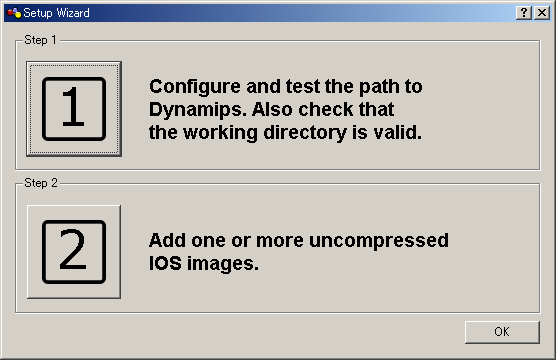

STEP 9: Now click on the “idle PC-finder” button to allow GNS3 to input the value automatically and use it. Select from the list and click on “Next”.

Gns3 iou setup install#
STEP 8: The next screen allows the user to install WIC interfaces in WIC slots if the selected IOS belongs to a device that has WIC modules. STEP 7: If the selected IOS belongs to a modular device, the following screen will ask the user to install the interfaces in available slots. Note: 256MB of memory would be enough for simple operations but if unsure about how much RAM is required,click on the “Check for minimum and maximum RAM requirement” link available on the screen. STEP 6: Now assign memory (RAM) to the device and click on “Next”. The device’s name can also be changed if needed. If the information is incorrect, the correct platform or chassis number is shown from the dropdown menu and can be selected. STEP 5: Now it will extract hardware information from the selected IOS file and list information in the next window with a device name. Note: If the selected IOS file is for an outdated device, the wizard may display a warning message. STEP 4: Verify the file path and click on “Next”.

Compressed files consume less space and are easier to manage.

Note: By default, IOS files are compressed but GNS3 supports both compressed and decompressed file formats. STEP 3: Select the downloaded image of the router to install on GNS3 VM by clicking on “Browse”. STEP 2: Click on the “New” button and select “New Image”. Navigate to Edit > Preferences > Dynamips > IOS routers. Let us install router C-3640 on GNS3 now. To perform router installation, we must have an IOS image. GNS3 has a feature called Dynamips which allows users to install ( CISCO IOS) images and emulate the router environment. It is possible to install a device on the GNS3 Virtual Machine(VM) that is not available in GNS3 Marketplace ( CISCO IOS). The abovementioned link directs to a Google directory which has the largest collection of Cisco IOS files. We can either get the file from a Cisco device or download it from Cisco’s official website (which requires a valid Cisco account and license agreement) or from an educational website. In this blog, the following three parts will discuss the installation process:Īs previously discussed, we must have an IOS file to install a Cisco device in GNS3.
Gns3 iou setup how to#
The blog also discusses how to configure a device through a template (from GNS3 Marketplace). This blog is for the users who want to simulate the router environment in GNS3VM irrespective of the vendors (Cisco, Juniper, etc.) The previous blog explained how to install and configure the GNS3 VM. It only facilitates a platform to use Cisco IOS but does not provide any Cisco IOS itself if someone wants to use any Cisco device in GNS3, they must install that device’s IOS first. GNS3 does not include any Cisco IOS in its default installation since Cisco IOS has copyright laws to protect it.
Gns3 iou setup software#
Cisco uses proprietary software called Cisco IOS for its routers and switches. GNS3 (Graphical Network Simulator-3) is a network simulator software used to simulate routers, switches, and other networking devices, and it runs on Cisco IOS.


 0 kommentar(er)
0 kommentar(er)
